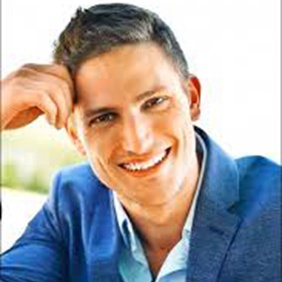如何构建学术Essay写作的结构?不清楚学术Essay写作的结构标准?
Due Essay的专业写作团队了解学术Essay写作标准,熟悉海外学校教育体制,提供专业高质量的Essay代做服务;
不管您是因为什么原因面临论文难题,都可以联系我们哦,只需扫描二维码即可联系到我们网站客服哦~
对于留学生来说,学习上很大一部分压力来自于各种类型的英文作业。Essay还好说,毕竟字数不多,会简单一点。但Report类型的作业就麻烦多了,而且Report本身也分为几种不同的类型,下面就给大家介绍一下常见的五种Report类型。
一、心得类的report
国外留学的同学们都常常会参加各类演讲和专题报告,听完之后老师就往往会布置一个report要求完成,那么在这种report中,我们千万要注意的一点就是避免流水账的写法。在这类report里,我们需要写出这场演讲回答了什么问题,作者的表达方式是什么,你从中学到了什么或者有什么启发,这对你未来的发展有什么影响。
二、田野观察类report
这类report通常出现在你进行了一场户外调查工作之后,在这样的文章中,你需要表达你管倡导的现象和问题各是什么,同时他们之间有什么关系,你又从关系中得到了什么,这都是需要出现在report中的内容。
三、立场类report
这类report有一点像essay,因为你需要表达你的立场,通常你需要准备好基本的立论也就是你的立场,这就要求你在规定教材之中找到自己同意或者相对赞成的理论或观点,形成立场,再为你的立场提供论点。
四、回顾式report
这类写作非常锻炼同学们的写作能力特别是批判能力,book review就是回顾类的其中之一,我们以book review为例,你需要提及的包括作者的基本问题、写作的背景、写作的风格、成文的影响等等。
五、研究型report
这类report比较像一篇小论文,要求你写出你的research method也就是研究方法,这就需要你时刻和老师保持沟通,以保证你写出来的东西不会走题或者偏离中心。
以下是我们教育学Essay代写的选段 方便大家参考
An Examination of Lung Kuo-cheng’s Educational Ideas in Breaking with Old Ideas
The movie, Breaking with Old Ideas, tells the story of Principal Lung Kuo-cheng, the protagonist of the movie, who builds up a Communist Labor College to oppose to the so-called bourgeoisie education and train successors for the proletariat revolution in 1958, nine years after the Liberation. After the college was built up, Lung admits many peasant students who have limited schooling and implements an education style that combines work with study. When he is criticized by his colleagues, he refutes that the guiding principle for running the college follows the Mao Tse-tung thought. In this movie, it is also the letter from Chairman Mao that saves the college from being banned by the superior leader. The movie was screened in 1975, one year before the end of the Great Proletariat Cultural Revolution. Presented as the representative of Mao Tse-tung’s education ideal, the movie advocates for equal education opportunities for the poor people and proletariat class struggles, which results in personality cult of the leader who has brought in such changes and the students’ blind belief in proletariat struggle and lack of respect for true knowledge.
The Social and Historical Background
After nine years of socialist construction, Mao believed that China was ready for surpassing the developed countries in economic development and initiated the Great Leap Forward movement. On the other hand, Mao also warned the public of the danger that the landlord class and the bourgeoisie might overthow the proletariat dictatorship and called the mass to suppress the uprising of the former two classes. As a result, many people were scared to be classified as the “landlords” or the “bourgeoisie.” In the cultural and education field, the Second Session of the 8th National People’s Congress in 1958 confirmed the paramountcy of the class struggle (“The Second Session of the 8th National People Congress of the Chinese Communist Party (May 5-23, 1958)”). The training of students for safeguarding the fruits of the Chinese revolution and the proletariat dictorship was deemed as the correct way for education instead of traning students with independent thinking and true knowledge and skills. The radical ultra-left thought dominated the society. Consolidating the proletariat dictorship, class struggle, and implementing the Mao Tse-tung Thought were seen politically correct until 1976. In 1975, Deng Xiaoping was appointed by Chairman Mao to preside the CCP works (“Deng Xiaoping Began to Host the Routine Works for the Party Central Committee on February 1, 1975”). Deng’s overall rectification was seen as “the Right Deviation and the Tendency to Reserve Correct Verdicts” by Mao who could not tolerate the denial of his proposals in the Cultural Revolution and criticize Deng for his reorganization. Breaking with Old Ideas could be regarded as an effort to consolidate the authority of Mao’s ideas in education and deny Deng’s efforts to correct the wrong doings in the Cultural Revolution in the education field. The Communist Labor College led by Principal Lung executed the proletariat education policies under this political and social background. Lung’s education ideas demonstrate clear features of proletariat struggle, egalitarianism, and personality cult.
Proletariat Class Struggle
Instructed by Mao’s educational ideas, Lung opposes to the so-called bourgeoisie education and insists that “education must serve the proletariat politics and must be combined with productive labor” (Breaking with Old Ideas). To execute these ideal, Lung implements a series of policies to approach the education ideas Mao has pointed out. Principal Lung admits students based on their family backgrounds and their identities as laborers. In his mind, children of the poor and lower-middle peasants are the kind and hard-struggling people and welcomed to study in this college. He shows great disapproval for the so-called “bourgeois education” which, in his idea, would result in the students’ refusal to go to the countryside for the countryside construction. Lung is a typical executive of Mao’s education ideas, which could help the CCP to get “intellectuals who would support the regime, and education that would reach and remold the peasant masses” (Fairbank 360). Lung chooses the top of the mountain as the college site. The idea corresponds to Mao’s calling for the intellectuals to go to the countryside to accept the education from the poor and lower-middle peasants, causing great human intellectual losses and environment damage.
仅为文章片段,更多精彩内容,请联系我们网站客服
DueEssay给您最专业的保障






